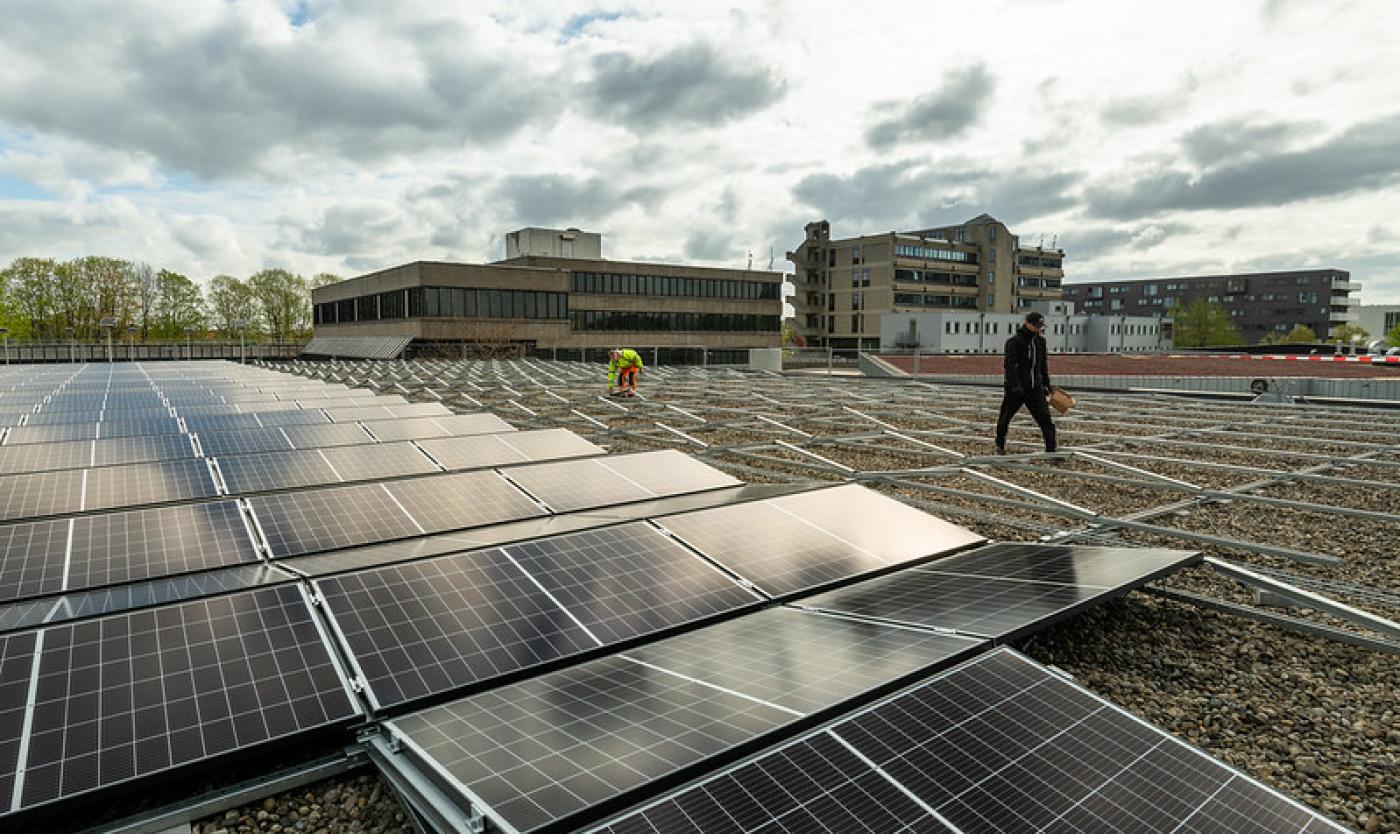Our ambition: innovation ventilation and heating
Underground heat network
The heat for the buildings and the sanitary facilities on the VUB campus is produced in the central boiler room (building S). It is then distributed over the entire site through an underground network of tunnels. Each building is connected to this underground heat network via a ‘substation’.
Renovation substations
The original substations are now about 40 years old. The renovation of eight substations between 2021 and 2023 will make the heat distribution and generation much more efficient. In the longer term, VUB is even aiming for a lower-temperature heat network, where surplus heat (residual heat) can be redistributed across the campus.
The greenest energy is the one you don’t use
The amount of water pumped through these tunnels every second is called the flow rate. Scientists have discovered that heating systems can operate much more economically by using lower flow rates, so by pumping less water through the system at a given time.
A limited reduction of the flow rate by 10% can save up to 27% in pumping energy. Thanks to these adjustments, natural gas consumption can be reduced by 13% and electricity consumption for pumping hot water by 75%. The result will be a reduction in CO2 emissions of about 1,000 tonnes in total.
Renovation building G
Building G has by far the highest heat consumption on campus due to the very high ventilation flows through the building. For example, approximately 160,000 m³/h of fresh air is continuously blown through the building. On an average winter day this requires about 600 kW of energy. In the chemical laboratories in building G there are many fume hoods. The design dates back to the 1970s and consisted of permanent and non-permanent ventilation. Due to a fault in the control system, the air was permanently extracted, so that not only were the chemical fumes removed but also the heat from the building.
With the renovation, that outdated concept made way for a modern laboratory design.

A modern laboratory design
The required air-flow rates will be significantly reduced by using smaller and more efficient (so-called low-flow) fume hoods. The air-flow rate is adjusted to the required extraction at that moment. Heat is recovered from the exhaust air.
What if additional heat is required?
Then heat pumps cover that shortfall. In addition, the building shell will get additional insulation and energy-efficient LED lighting, and solar panels will be installed on the roof.

Overall, this will reduce CO2 emissions by 1,600 tonnes of CO2/year. The total energy emissions for the entire campus was 6,800 tonnes in 2018, In a nutshell, all solid measures to reduce VUB’s environmental impact!
The renovation of building G will be subsidised by the European Union and the Brussels-Capital Region in the framework of the ERDF 2014-2020 programming (European Regional Development Fund).